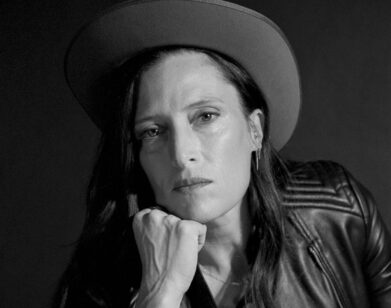End of the Line

Best known until now for The Proposition, Australian director John Hillcoat was tasked several years ago with adapting The Road, Cormac McCarthy’s tale of a father and son (Viggo Mortensen and Kodi Smit-McPhee) battling their way across post-apocalyptic America. After a long, draining shoot and a delayed release, the film (which opens Wednesday) has finally found its way to theaters. Hillcoat talked to me about meeting with the reclusive McCarthy and holding his breath during an unforeseen on-set bonding session between his two lead actors. (PHOTO: VIGGO MORTENSON AND KODI SMIT-MCPHEE)
HARTMAN: Did McCarthy visit the set?
HILLCOAT: He came up once, but it was for quite a few days. He and I were speaking regularly, at length. He’d never seen the script, hadn’t wanted to see it, but what was special about that visit was that he brought his own son, who co-wrote the book–that’s Cormac that said he co-wrote it, in the sense that the boy calls him “Papa” and they have a special relationship. Cormac was deeply moved by what he was seeing, so that was fantastic.
HARTMAN: Did you ever screen it for him?
HILLCOAT: We later showed him the entire thing. That was a hell of a moment, because [screenwriter] Joe Penhall and I went to New Mexico to show him. It was just the three of us in the screening room, and there was this painful moment afterwards because he disappeared into the men’s room for 20 minutes. We were really sweating it. But he really loved it. He took us out for a seven-hour lunch afterwards.
HARTMAN: Your last film, The Proposition, was about outlaw brothers; this one is about father and his son.
HILLCOAT: The key to it all, really, was that relationship. Viggo and I were so very relieved to have discovered Kodi, and Viggo and Kodi were both very passionate about the material. I think they worked off the landscapes; that was one of the advantages of being in those actual places. It was like another actor that they were always reacting to. And there was a very special moment early on, a breakthrough that happened that just made them inseparable.
HARTMAN: What was that?
HILLCOAT: It was that scene where he’s washing the boy’s hair out after the terrible shock of the road gang, and Kodi started to cry for real because he was cold from the water in his hair. We were all on edge. I was about call “Cut,” but Kodi kept playing the lines. And Viggo was starting to comfort him as well as playing the scene, so it became this incredible commitment to what we were doing.
HARTMAN: That must have been intense.
HILLCOAT: It was extraordinary. To the credit of Kodi’s father, who’s also an actor, he stepped away from that to allow Viggo to calm Kodi down. They held their embrace. It went on for 20 minutes after the scene, and from that day on there was an extra dimension to their relationship.
DARRELL HARTMAN: The look you achieved is striking–it’s as if there’s a thin layer of ash over everything. How did you do that?
JOHN HILLCOAT: CGI was critical, but it was always used as a last resort. Most of of it was in-camera. We did a long, extensive tour of America’s mini-apocalyptic zones. And there were, surprisingly, a lot of them–flyover zones, run-down places. And we shot in winter and in overcast weather as much as possible.
HARTMAN: Did you take a depressing tour of the U.S. before the shoot?
HILLCOAT: Chris Kennedy, my production designer, actually found most of those places from a computer in Australia. It was a combination of Google Earth and an obscure website called Lostandabandoned.com, which is how we came across the deserted interstate with the tunnels in Pennsylvania. Then it was a matter of basically trying to get everything in-camera in places like post-Katrina New Orleans and Mount St. Helens, where the mountain blew up, and Oregon, for the gray beaches. It really was a tapestry of locations: neighborhoods that have lost their industry, a lot of deserted houses and run-down areas.






